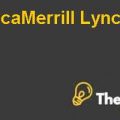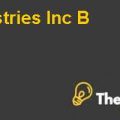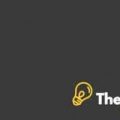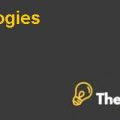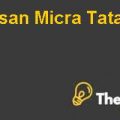
Hewlett-Packard: The Flight of the Kittyhawk (A) Case Solution
Introduction
Hewlett-Packard was one of the largest companies in the world that established by the Stanford graduated electrical engineers Dave Packard and Bill Hewlett in 1939. Hewlett-Packard was the first organization that first introduced disruptive technology in the market, which is known as Kittyhawk. Initially, the company began its operation with electronic instruments company to to dominate the printer industry. The company put more focus on technical innovations as they believed that technical innovation is a key to success. Moreover, In order to achieve strategic goals of the company, HP employed an MBO process, which helped the company in improving its business and financial goals in the market. On the other hand, they always preferred to follow a decentralized organizational structure, which allowed the firm to make its decision about the businesses movement and activities. Furthermore, the company has four major organizations which include, Computer Products, Test and Measurement, Measurement System, and Computer System. These organizations consisted of a personal computer, mass storage product groups, Ink-jet printer, and company laser printer.
The Company launched its small drive disk ( of 1.3 inches) in 1992. The drive capacity is smaller than other existing drive products that are currently available in the market. As compared to Kittyhawk, DMD has achieved a profitable position in the market, which helped the company in maintaining its sustainable position in the market. The company focused on its high-performance products within 5.25 and 3.5 inches architecture that provided higher profit margins to the division. As compared to industry, HP provides its customers a high capacity in megabytes, which help them in maintaining its competitive position in the market. DMD has focused on high-end engineering workstation that helps them in providing the next generation drives to the customers at a higher capacities and faster access times. Moreover, the general manager of DMD needs that Kittyhawk provides not only the computing marketplace; however, also any manufactured goods that use microchips.
In 1992, Rick Seymour came up with five innovative parameters which helped the company in launching its project successfully in the market. Moreover, the management team expected that introduction stage will take only 12 months from beginning to end. They also expected that by launching this product, the company would earn a net revenue of $100M in two years, which would be beneficial for performance and growth of the company. In addition to this, the company launched its first innovative 1.3 inches drive in the market that came up with its 18-month stage-gate process. However, the primary objective of the company was to become a market leader of the technological product. For that, the company expected that they need to attain approximately 35% growth rate that would help the company in hitting its target goals and to break even within 3 years.
Although the defined limitations, HP created the strategy of marketing position by expectations instead of taking benefits from the market opportunities. On the other hand, the company estimated its revenues from financial projections based on the expectations. Moreover, the marketplace tendencies were restricted on the budget basis and not by dimension. The Kittyhawk challenged the risk of taking two extremely competitive products in the market such as 1.8-inch drive, and the flash memory drives, which were probably announced shortly.Hewlett-Packard The Flight of the Kittyhawk (A) Case Solution
Milestone of Hewlett-Packard
| Year | Activities |
| 1939 | Bill Hewlett and Dave Packard establish the company out of a Palo Alto garage with $538 and a Sears Roebuck drill press. |
| 1940 | HP pay its first bonus to workers. |
| 1942 | Construction kicks off on the company’s first building, in Palo Alto. |
| 1948 | Revenue surpasses the seven figure mark, ending the year at $2.2 million with 128 employees. |
| 1957 | HP becomes a publicly traded company with an initially public offering of $16 per share. Revenue is $28 million this year. |
| 1958 | The company built its first acquisition of graphic recorders at California. |
| 1968 | The company introduced its desktop scientist calculator that stores programs on magnetic cards. The company first used the term personal computer. |
| 1982 | HP debuts its LaserJet printer which is considered as the most successful product line in the market. |
| 1989 | HP turns 50. |
| 1995 | Dave Packard publishes the “The HP way” book. |
| 1999 | HP becomes one of the 30 component stocks in the Dow Jones industrial Average. In revenue is $43 billion. |
| 2002 | Carly Fiorina become the president and chief executive of the HP who lead the company operations.... |
..............
This is just a sample partial case solution. Please place the order on the website to order your own originally done case solution.



